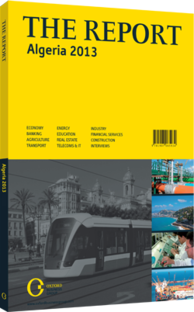OBG talks to Farouk Chiali, Minister of Public Works

Interview: Farouk Chiali
To what extent are motorway projects progressing?
FAROUK CHIALI: The construction of an efficient road and motorway network that ensures accessibility to the whole nation is the basis of the overall sectoral strategy under the Road and Highway Master Plan ( 2005-25). This document defines priorities through axes of development, namely, the realisation of the East-West Highway (as well as the second, third and fourth motorway bypasses), the highway in the Highlands and the 23 motorway links to the East-West Highway.
Public authorities also continue to invest in the maintenance and rehabilitation of road infrastructure and develop north-south motorways connecting coastal roads, the East-West Highway, the highlands highway bypass and the south of the country. The authorities are rehabilitating coastal roads in line with the government’s strategy to promote tourism and enhance the coast. Finally, efforts continue to be undertaken to improve access to the southern regions and highlands, modernise and extend the existing network, complete the Trans-Saharan Highway and construct urban facilities for the decongestion of traffic.
What are the benefits of implementing tolls?
CHIALI: The toll for the East-West Highway is based on fairly basic principles: tolls will help maintain quality and service; finance maintenance; cover operational costs of the motorway; involve foreign carriers and drivers; and share the costs among more than just taxpayers. It is necessary to rely on the user, rather than on the national taxpayer, in order to be fair. The “user-pays principle” can also create several thousand jobs in the northern region. The impact of the toll on transport costs will be minimal, because the price will be set by the government after a comprehensive analysis.
What progress has been made on north-south links?
CHIALI: The construction of a modern motorway network that meets international standards is the main objective of the Public Works National Programme. This motorway programme involves spatial planning and will contribute significantly to the reduction of road congestion for goods and users. Within the framework of the motorway network’s development, many projects were planned during this five-year plan, notably the 1300-km highlands highway bypass, the fourth motorway bypass, the motorway link connecting Béjaïa to the East-West Highway and the motorway connecting Djen Djen to the East-West Highway.
How is the Trans-Saharan Highway progressing?
CHIALI: Regional infrastructure is a key vector of economic and social development. Since the adoption of the Trans-Saharan Highway project, many efforts have been made to complete it, as it is considered a priority project under the New Partnership for Africa’s Development (NEPAD) programme. In addition, there is strong willingness and proven commitment from African leaders to achieve a better future that offers real prospects for the development of our continent. Concerning Algerian sections of the Trans-Saharan Highway, after the completion of the work of the last section of the Algiers-Lagos axis in 2009 – namely the Tamanrasset-In Guezzam section – we began to work on the two Malian branches, the Tamanrasset-Tinzaoutine and Tamanrasset-Timiaouine lines on the border with Mali. These have brought us closer to completing Algeria’s section of the Trans-Saharan Highway by 2015.
What can be learned from foreign builders?
CHIALI: Due to the scale of the programmes under way in the public works sector, we are launching projects that require technical expertise and for which we need to consolidate our own skill sets. We encourage win-win partnerships for better results. The participation of foreign companies has greatly contributed to our capacity to realise projects and enabled Algerian firms to acquire know-how and technology. Within the framework of partnership, we encourage joint ventures between Algerian companies and foreign operators.
You have reached the limit of premium articles you can view for free.
Choose from the options below to purchase print or digital editions of our Reports. You can also purchase a website subscription giving you unlimited access to all of our Reports online for 12 months.
If you have already purchased this Report or have a website subscription, please login to continue.

